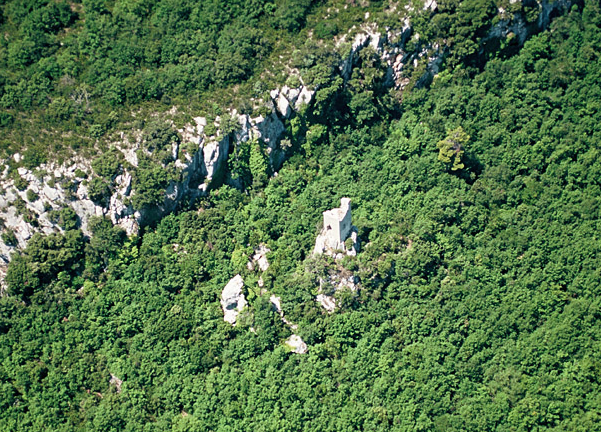Researchers working in one of the world's most biodiverse and fragile habitats have identified Castela senticosa, a new plant species that they propose to be classified as endangered.
During a study to document the flora of the Martin Garcia mountain range in the Dominican Republic, the plant, which grows like a bit of shrub coated in an intimidating coating of spines, was discovered.
According to lead author Lucas Majure, an assistant curator at the Florida Museum of Natural History and curator of the University of Florida Herbarium, they were collecting anything they came across, intending to have a comprehensive species list for the whole mountain range.
Hispaniola Mountains

The mountains of Hispaniola maintain vast areas of intact tropical dry forests, extremely diversified ecosystems that, like the rainforests they border, are threatened globally by deforestation, overharvesting, and climate change.
Although they are both endangered, the destruction of a tropical dry forest might result in the extinction of many more species.
This is the case because rainforests are commonly located in lowland basins, where rainfall, temperature, and soil type are all consistent across broad regions. While species diversity is high, many rainforest plants can spread hundreds of kilometers.
Diverse Dry Forests
Dry forests can be just as varied as wet forests, but their flora is more regionally confined; up to 73 percent of dry forest plant species in the American tropics are indigenous to a single location.
Plants that thrive on Caribbean islands have an extra layer of isolation built in because they have been removed from continental landmasses for more than 50 million years. As a result, most Caribbean vegetation is unique to the planet.
Initial Investigation
During their investigation of the Sierra Martin Garcia's slopes, Majure and other researchers from the United States and the Dominican Republic found over 700 plant species.
However, Majure and Teodoro Clase of the Dominican Republic's National Botanical Garden were baffled when they came to a nondescript plant halfway up the mountain. The plant was mostly thorns, with few leaves and no flowers or fruits, leaving little in the way of distinguishing features.
Majure brought one of the branches back to the Florida Museum for additional investigation after carefully gathering and pressing it.
After returning from the field, Majure got right to work, trying to figure out what kind of plant it was. He had an excellent reference frame for what the species weren't after cataloging the variety of Caribbean plants for over a decade.
On the other hand, finding a positive match would need some thorough investigation. "This had been bothering me for a long time since I couldn't figure it out," he explained.
He came across a promising possibility while combing through the digitized records of plant species held at the New York Botanical Garden.
A little, broken branch with a profusion of pale-green thorns was nestled away among more than 7 million preserved plants. Smithsonian botanist E. C. Leonard collected the species in northeastern Haiti in 1929.
Castela depressa, a species unique to Hispaniola and related to the very invasive tree of heaven that has spread throughout most North America, was discovered and subsequently named Castela depressa. Majure seems to have met his equal.
Collecting DNA
He collected DNA from both the old and new collections and similar species to confirm the identification. He discovered that the almost century-old plant was the match he'd been looking for. But it wasn't Castela depressa or any other previously gathered material.
Majure, on the other hand, had discovered something completely new. Given that it had only previously been collected twice, it was almost certainly a one-of-a-kind item. But, to legally identify a new species, he'd have to discover another specimen with both blooms and fruit, allowing him to give a complete image of how the plant appeared.
Majure returned to the Dominican Republic with Yuley Pieyro, one of his Ph.D. students, to search for the elusive plant. However, when they went hiking in the dry tropical forests of Hispaniola in late April, the weather lived true to its name. "It was dry," Majure remarked, "and I felt there was no chance we'd discover this plant in blossom."
However, after trekking to roughly mid-elevation, Pieyro noticed a flash of red against a backdrop of dull-green flora, which turned out to be the precise plant they were seeking for upon closer study.
The plant featured small, white to cream-colored blooms and scarlet, scythe-shaped fruit that looked like peppers, and it was one of the only plants in full bloom that early in the year.
It's unknown what pollinates the plant's blossoms or consumes its fruit, but Majure believes its natural history may give some insight. Castela senticosa is thought to have originated on the island; however, it is closely linked to Sonoran Desert plants in western North America.
The seeds must have been transported considerably since they are too huge to be spread by breezes.
Majure and Clase aren't the first or last to describe new species from Hispaniola's dry woodlands, and Castela senticosa isn't the last. Clase said the two recently worked on naming a new plant with leaves the size of Aspirin tablets, and there are others ready to be named.
Related Article : One of the World Largest Mass Extinctions May Have Been Triggered by Volcanic Winter
For similar news, don't forget to follow Nature World News!
© 2025 NatureWorldNews.com All rights reserved. Do not reproduce without permission.





